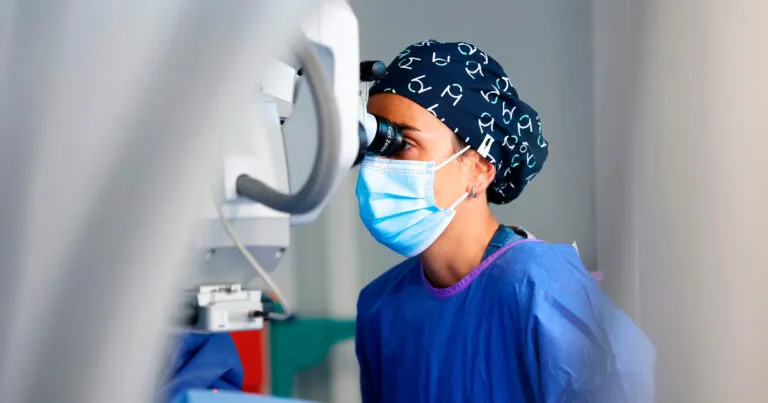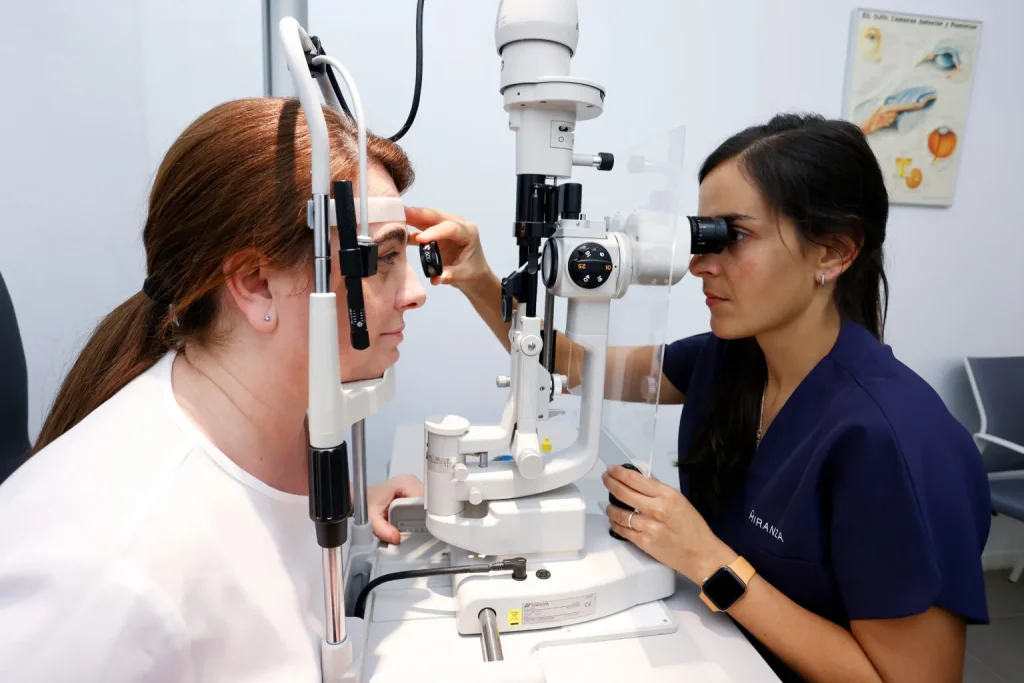
Cataract surgery, even on clear crystalline lenses, effective against certain types of glaucoma
The lens implanted in this operation, which is thinner than the natural crystalline lens, reduces the risk of irreversible vision loss in most narrow-angle glaucomas.
Cataract surgery can be very useful as a treatment for patients with narrow-angle glaucoma, even if they do not have a cataract. According to Dr. Lucía Perucho, Glaucoma specialist at Miranza Palma, in patients with this type of glaucoma whose intraocular pressure (the main risk factor for glaucoma) is usually very high, cataract surgery, also known as crystalline lens surgery, is recommended, as it is effective in most cases and can avoid having to resort to other specific glaucoma surgery.
“When we perform cataract surgery, we replace the crystalline lens, which is the eye’s natural lens, with an intraocular lens that is thinner, thus leaving more space for the aqueous humour (the liquid that fills the eyeball) to drain properly through the angle or trabecular meshwork, a kind of “sieve” through which this liquid enters and leaves the eye, thus helping to reduce intraocular pressure. For this reason, this surgery, even in eyes with a completely transparent lens, is a very important therapeutic weapon for angle-closure glaucoma, in which the space in the angle is very narrow,” explains the ophthalmologist. Moreover, if the patient with glaucoma, especially angle-closure glaucoma, also suffers from cataracts, which is common due to the relationship of both diseases with age, the risk of increased intraocular pressure may be even greater, since the increased thickness of the lens related to the cataract may further thicken the lens.

Advances to preserve vision for life
Dr. Perucho states that “today, we have the possibility of halting the progression of glaucoma and ocular hypertension from very early stages”. To this she adds that “the different techniques currently available allow patients diagnosed years ago with a poor prognosis to preserve their vision in the long term and for life”. In addition to lens surgery in some cases, the usual treatments for glaucoma, a neurodegenerative disease that affects approximately 3% of the population, causing damage to the eye’s optic nerve, are iridectomy or partial removal of the iris in cases at risk of developing angle-closure glaucoma, topical therapy (drugs in drops), classic surgery and minimally invasive MIGS, all of which are aimed at reducing intraocular pressure.
However, early detection of these diseases will be key to preventing further vision loss and applying the most appropriate treatment in each case. Some of the most common indicators are blurred vision, loss of visual field, eye pain or halos around lights. However, the disease often gives no symptoms until it is very advanced, as the loss of vision caused by the death of optic nerve cells is usually gradual and peripheral, which is why half of the people with glaucoma are unaware that they suffer from it. For this reason, the glaucoma expert recommends having an annual ophthalmological check-up from the age of 50 onwards, as well as if you have a family history or high myopia, to undergo a complete ophthalmological examination to confirm whether the patient has the disease or is at risk of developing it due to high intraocular pressure.